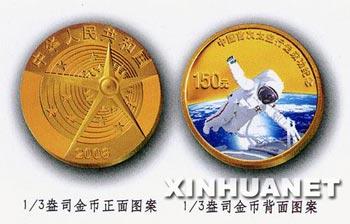|

|
|
Commemorative gold coin of Shenzhou 7 space mission
|
Jiang Huiqing, Industry Insider said "In the early times, because our economy was comparatively weak, the nation’s average income was low. Prior to 1997. most gold coins were issued overseas. However, after 1997, the national economy developed along with the reform and opening-up policy. People’s well-being and income grew. And people began to collect and invest, in gold coins."
That trend really took off, in the late 1990's. What use to be a one billion yuan industry in the early nineties, is now worth over 10 billion. Meanwhile, market prices for gold coins issued between 1998 to 2006 has risen by at least 30 percent to more than 10 times, depending on the coin. Such robust numbers has attracted more and more people to join the gold coin collection band-wagon.
But, it’s more than just about the money. Gold collection also holds a special place in Chinese people’s hearts, because of their high cultural and aesthetic value.
Jiang Huiqing said "The themes of gold coins issued in China since 1979 to now cover over five thousand years of Chinese culture. They also commemorate important, key figures in Chinese history, scientific milestones, and our overall cultural civilization."
So-gold collection became almost like a way to hold on, to a piece of history. That desire became even more evident, in the lead up to the Beijing Olympic Games. Various kinds of gold-made Olympic Souvenirs were warmly embraced and snapped up by the market. That not only boosted the gold market and gold consumption, but also raised the social awareness of gold collection.
This was the scene the morning when the last batch in a series of five Olympic Gold Bars went on sale. People were willing to queue up for hours, waiting for their chance to take home the precious memorabilia.